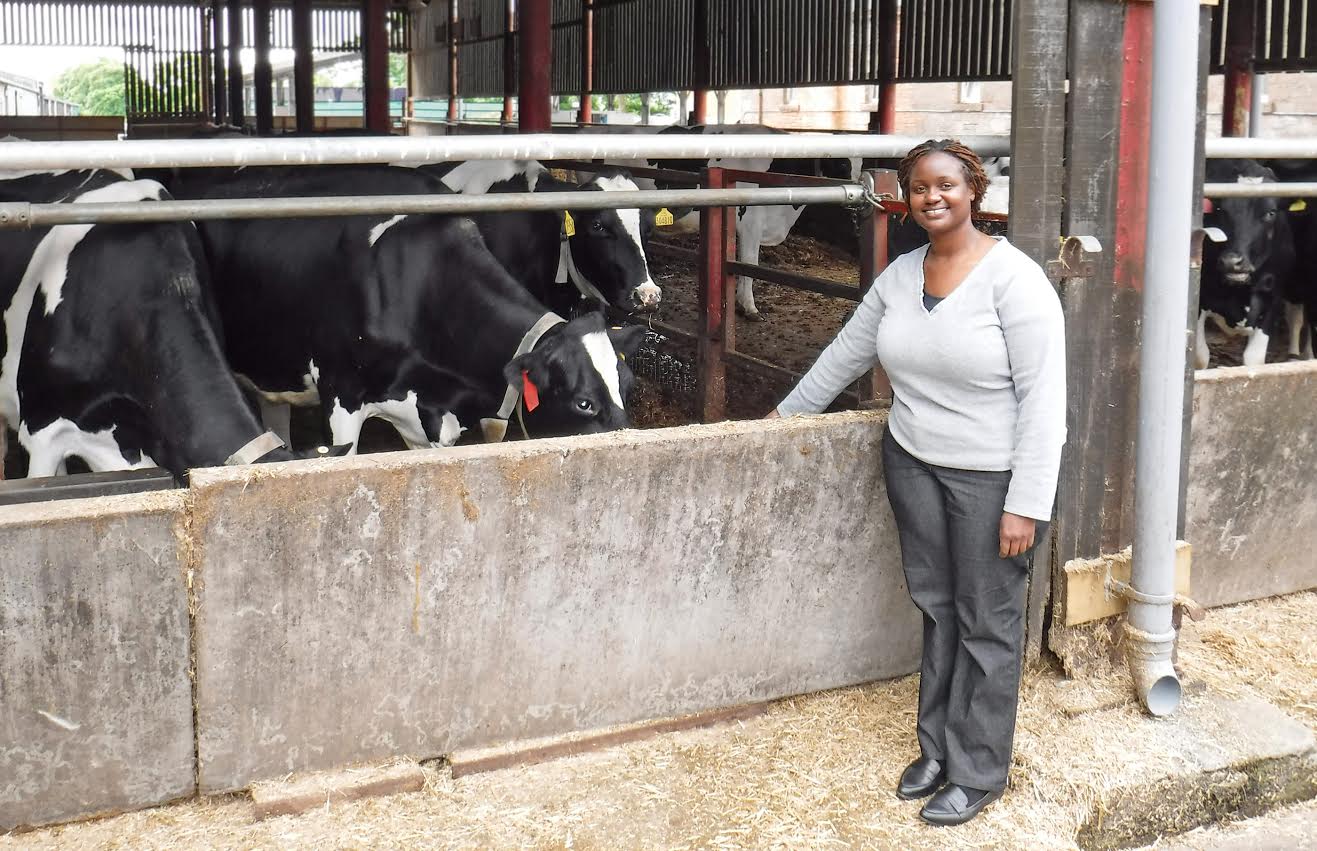
A Scotland’s Rural College (SRUC) PhD student aims to make it far easier for females to get pregnant on the first attempt, female cows that is.
Bridgit Muasa, whose research has been funded by the Bill and Melinda Gates Foundation, will assess the easiest way for east African dairy farmers to tell whether their animals are ‘on heat’ and so improve rates of conception in the African dairy industry.
While in the UK dairy cows often conceive on the first attempt, in Kenya where Bridget’s PhD is partly based, conception can take three or four attempts, and this can be a significant cost with semen bought in for the job.
Bridgit says: "Basically without access to modern equipment the only way to tell whether a cow is ready to conceive is to watch her, noticing subtle changes in behaviour that indicate she is fertile.
"However, that just isn’t practical, African smallholders often have crops and other animals to tend to; they just don’t have the time to constantly watch their cows."
Cows tend to move around more when they are fertile and they are also mounted more often by other cows in the herd, however observing these behaviours isn’t as accurate as using the types of modern tools UK farmers have access too.
Those tools involve monitoring behaviour, or the production of oestrogen (the hormone which peaks when the animal is at its most fertile or ‘on heat’), and alerting the farmer as to when their cows are ready to conceive.
Bridget aims to assess a variety of these tools to work out which ones might benefit African dairy farmers.
Three tools
Bridgit will study three tools; an activity monitor, a mount detector and a milk profile test. The activity monitor records how active a cow is through a device attached to the hind leg.
A mount detector – basically a scratch card type device located on the cow’s behind – can record how often a cow is mounted by other cows.
The final tool measures the progesterone hormone levels in the milk produced. Farmers can check fertility simply by dipping a test strip in a recent sample of milk, a strip that, like human pregnancy tests, will reveal two lines when a cow is ready to conceive.
The products will be tested first at SRUC’s Dairy Research and Innovation Centre in Dumfries, before being tested again at a university farm based in Kenya.
This will ensure not only the general success of the products in measuring oestrogen, but also how that translates over to the African environment, and indeed to the African dairy cow, which is of course a rather different beast.
"I’m really interested to find out both how well the products work generally, and what differences we might see between the UK and African dairy sectors."
Bridgit says: "I hope that this research will identify practical tools the dairy farmers in Kenya can use, and that those tools will save them money result in a rise in conception rates."
